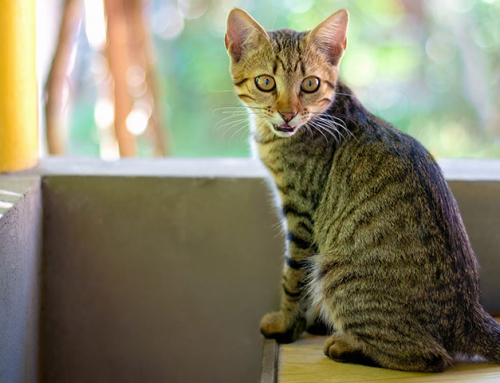I love interacting with the readers of this newsletter. What I have learned over the last few years is that someone helping manage their diabetic pet is almost always ready and willing to learn and ask questions. That’s why I seek it out. And I am always available to help.
Over the last week or so, I have had some really interesting questions asked of me, so I thought that if one of our diabetic pet owners had this question, than many of them might.
Below are a few of them. Hopefully you can also learn something from these.
We are giving our diabetic nine year old cat 2 units of Lantus insulin twice per day. Lantus is very good, but expensive. Is there a comparable insulin that you recommend for your feline patients?
Answer: Lantus (aka glargine) and PZI are the usual insulin choices for cats overall due to their duration of activity. Levemir is an even longer acting insulin and is coming into vogue for felines as well as for dogs. I usually reach for Lantus for my newly diagnosed kitty diabetics.
Have you considered getting a Lantus insulin pen? That’s what I do for my clients since Lantus is my go-to insulin for cats. The pen is offered with a 3cc capacity instead of in a 10cc vial, so you waste much less by the time you need to toss the 10cc vial. At this dose, a pen would last 2.5 months or so. The local pharmacy in my small town sells pens for $90 each, and that’s just a little mom and pop local pharmacy. Sometimes big box store pharmacies have good prices on insulin. I don’t use the pens as pens though. Rather, I take the top off and use it as a vial and then use insulin syringes to administer the shot. I’m hoping this helps your budget! Less wasted insulin! Run this by your veterinarian and see what they have to say.
When my cat was diagnosed with diabetes I was told to give him his insulin in the scruff of the back his neck. In your picture it seems as if you are giving insulin in the thigh (This was referring to a picture next to a recent ADW Diabetes article I had written – Dr. Joi).
Answer: When I first instruct a client to give shots to a diabetic dog or cat I have them start giving the insulin injections in the scruff. More often than not, new diabetic pet owners have the “deer in the headlights” look about them. Injections usually hurt less in the scruff than in some other parts of the body for dogs and cats. Teeny little insulin needles don’t hurt much, but clients need to get over the mental block of poking their sweeties with a needle.
As pet owners become savvy and practiced at giving injections, I like them to start moving the shot around to avoid scar tissue at one spot. Scar tissue could hinder absorption. So they may start going down one side of the body and back up the other side. You don’t need to give it in the thigh as that would be awkward if there is only one person giving the injection. It just happened to be in the picture! The site isn’t really important other than we like to move it around.
Do I need to check my diabetic pet’s blood glucose before each and every insulin injection?
Answer: If your pet is very well regulated and eats equal portions twice daily and gets equal insulin doses twice daily and has a good appetite, then the answer is no. In fact, it might even affect your emotional bond with your pet to test so frequently. However, if your diabetic pet is poorly regulated or fragile, then you might need to test before each injection. Or, if you and your vet have your kitty on tight diabetic control with hopes of achieving diabetic remission, then yes, test each time. No two patients are the same. Chat with your vet to formulate a treatment plan right for you and your diabetic pet.
You know I like hearing from our readers. Don’t hesitate to email me at [email protected]
NOTE: Consult your veterinarian first to make sure my recommendations fit your pets special health needs.







Hi, Loiuse! Any insulin will only be FDA approved for a month once the pen or vial is opened. Unfortunately, many pet owners have a hard time affording a new pen or vial every month. Vets have often turned a blind eye to owners using insulin for a longer period than a month. We understand financial constraints. I personally feel comfortable allowing my clients to use lantus/glargine for 3 months before tossing the vial or pen. I let owners use lantus/glargine longer than other types of insulin. Of course this means they have to keep it in the fridge, pay attention to any decrease in regulation of their pet’s diabetes, not let it roll around the fridge and into the butter dish, watch for any change in appearance, etc. After one month the efficacy may indeed go down. Since you noticed a change in your pet’s blood glucose on day 37 your vet gave you good advice to open a new pen. Any time the blood glucose seems different we should consider when the insulin was opened. Imagine the financial pain from wasting most of a 10cc vial instead of a smaller 3cc pen of lantus/glargine. Since you could tell a difference for your pet I would change to a new pen each month!
🙂 Joi
Regarding the insulin Lantus pen, you mentioned it’ll last for about 2 1/2 months. My understanding it’s good for only 30 days and after that it starts to lose its effectiveness. We give Colby 2 units 2x a day and check his glucose #’s before each shot. What we had experienced i swhen we got into the 37th + day range of using it, his glucose #’s started to get higher & sporadic. So when we called our vet, he asked us a list of questions and one of them is how old is the pen (whether the vial or pen). When we told him 40 days + he suggested we use a new pen since it’s the same for humans when they use the Lantus pen. Could you please clarify? Thanks.